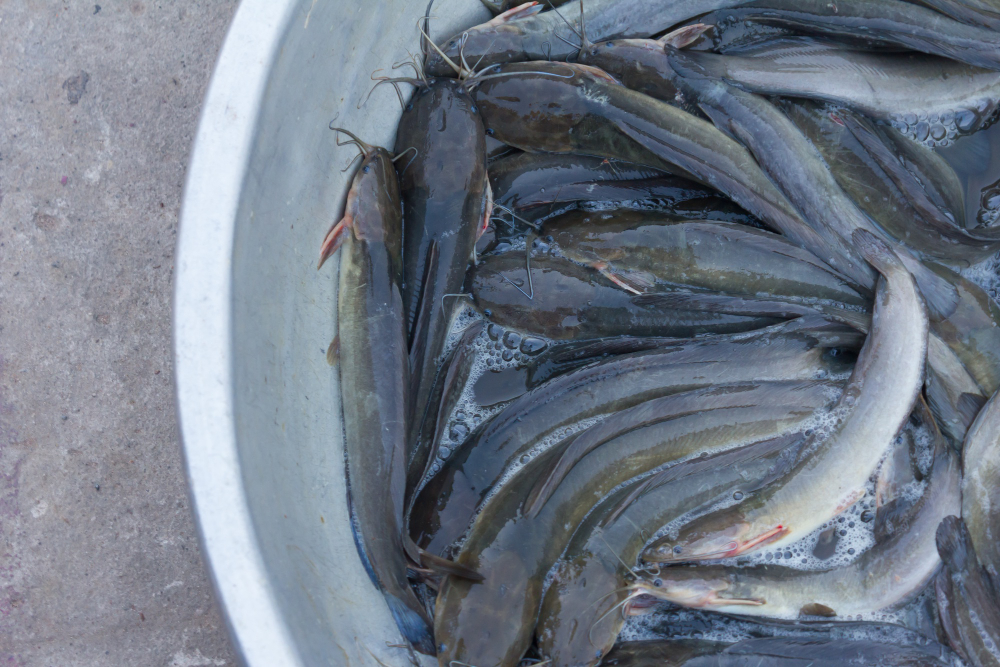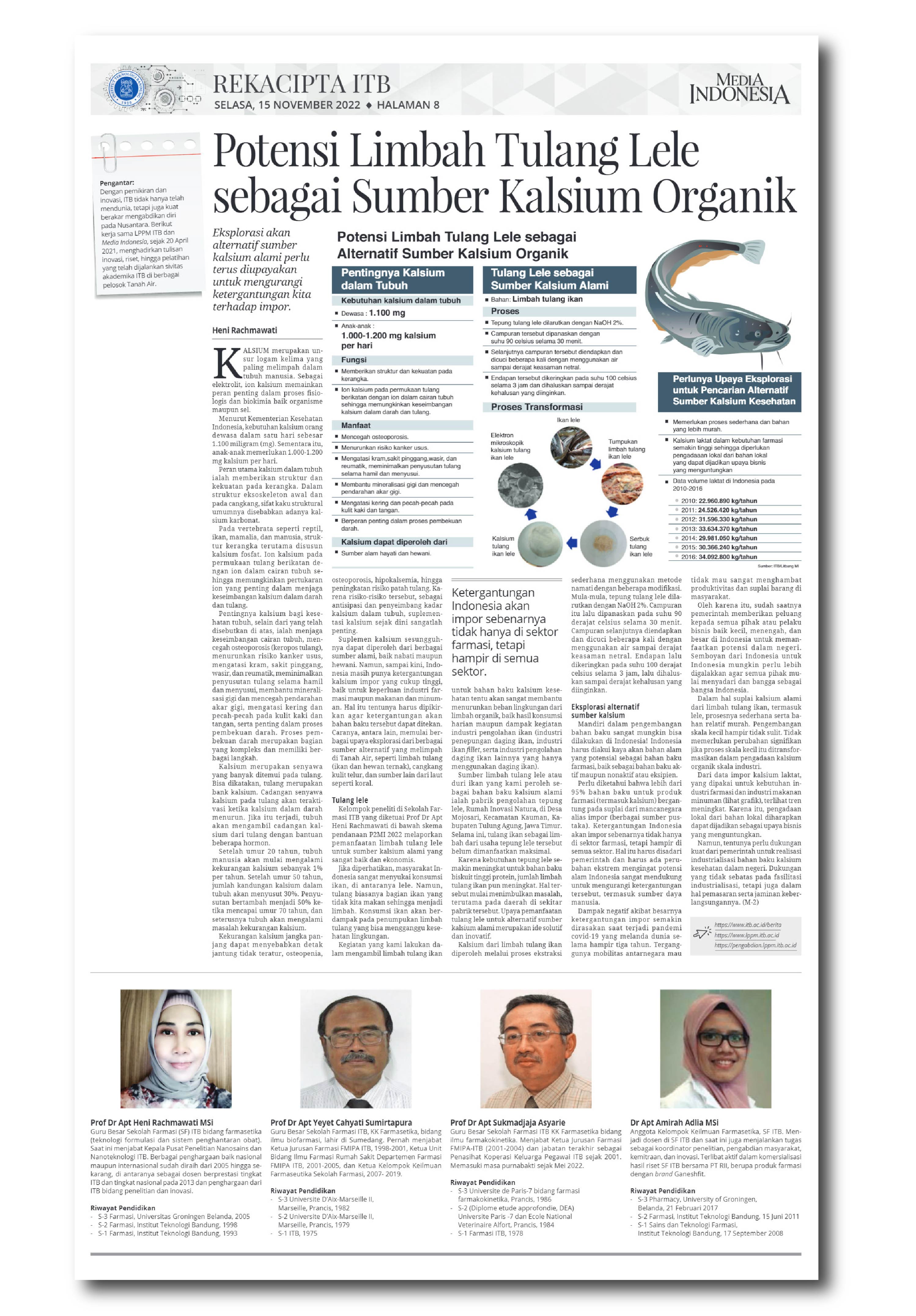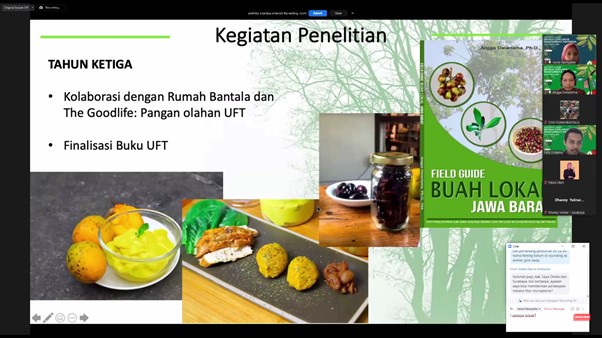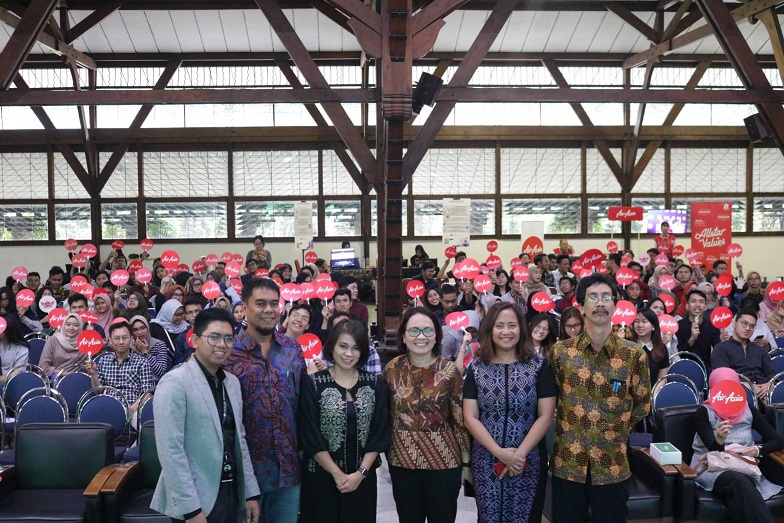ITB School of Pharmacy Team Explores Alternative Sources of Calcium from Catfish Bones
By Adi Permana
Editor Adi Permana

Source: freepik
BANDUNG, itb.ac.id—Calcium is the fifth most abundant metallic element in the human body. As an electrolyte, its ions help maintain the physiological and biochemical processes at cellular and organism levels. According to the Indonesian Ministry of Health, adults need to consume as much as 1,100 milligrams of calcium per day while children need 1,000-1,200 milligrams of intake per day.
Regarding health, calcium has a myriad of roles such as maintaining the balance of body fluids and the clotting process of blood. However, after the age of 20, the body will usually experience calcium deficiency of 1% per year after the age of 20. Long-term calcium deficiency can lead to irregular heartbeat, osteoporosis, hypocalcemia, and increased risk of fractures. Therefore, anticipation and efforts to balance its levels is recommended from an early age.
Calcium supplements can be obtained from a variety of natural sources. However, Indonesia still meets its pharmaceutical and food industries demands by imports. This has an impact on the raw material dependency so that other innovative alternatives are needed.
The research group at the School of Pharmacy, led by Prof. Dr. apt. Heni Rachmawati, solves this problem by utilizing the waste of catfish bones, which are great natural and economic sources of calcium. Under the P2MI 2022 funding scheme, the research was conducted by Prof. Dr. apt. Yeyet Cahyati Sumirtapura, Prof. Dr. apt. Sukmadjaja Asyaria, and Dr. apt. Amirah Adlia M.Si.
"Our innovation will greatly reduce the environmental burden of organic waste from daily consumption and fish processing activities," Prof. Heni stated, as mentioned in the Engineering rubric of Media Indonesia.
Prof. Heni added that the catfish bones are taken from the processing plants of catfish flour Rumah Inovasi Natura located at Mojosari Village, Kauman District, Tulung Agung Regency, East Java. Up to this point, the waste has yet to be utilized optimally.
Calcium is obtained through a simple extraction process using the modified version of the Namati method. Firstly, the catfish bone flour is dissolved with 2% NaOH and heated at 90oC for 30 minutes. The mixture is then precipitated and washed several times using water to neutralize its pH. The precipitate is dried at 100oC for 3 hours and mashed according to preference.
Obtaining natural calcium supply from fish bone waste is considered as a very simple solution. Not only are the raw materials relatively cheap, but most people can also develop them on a small scale. According to Prof. Heni, the transformation of small-scale processes to industrial scale is not difficult. She hopes that the procurement of organic calcium can help Indonesia to be more independent in procuring raw materials to the people. "It is time for the government to provide opportunities for the public to see the potential and take advantage of natural resources to reduce dependence on imports," she emphasized.

*This article has been published in the ITB Engineering rubric of Media Indonesia. The full article can be read on https://pengabdian.lppm.itb.ac.id
Reporter: Sekar Dianwidi Bisowarno (Bioengineering, 2019)
Translator: Ruth Nathania (Environmental Engineering, 2019)

.jpg)
.jpg)
.jpg)
.jpg)
.jpg)


